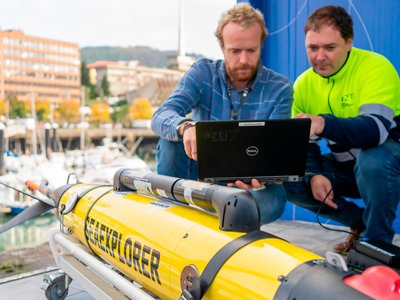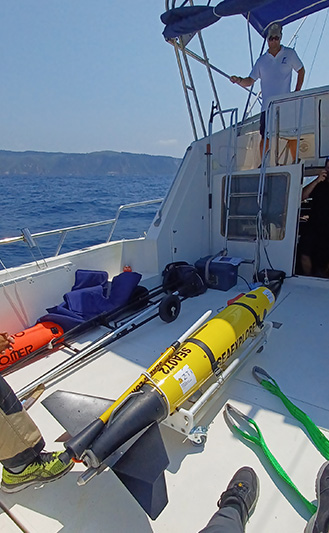Autonomous underwater vehicles
Gliders are autonomous underwater vehicles that are propelled and steered by changes in their buoyancy and internal weight distribution, rather than traditional propellers or thrusters, allowing measurements to be taken in a silent environment and increasing their autonomy at sea. These vehicles offer the possibility of observations that can reach a large spatial coverage and duration, extending ocean sampling missions from hours to weeks or months, over hundreds of kilometres.
AZTI’s autonomous vehicle system was born in 2022 and so far missions have been carried out in the Bay of Biscay, where hydrography is combined with biogeochemical information or pelagic species distributions, depending on the sensor head used. This autonomous vehicle system consists of two SEAEXPLORER gliders and three interchangeable sensor heads (payloads), with a navigation speed of 0.5-1 knots.



